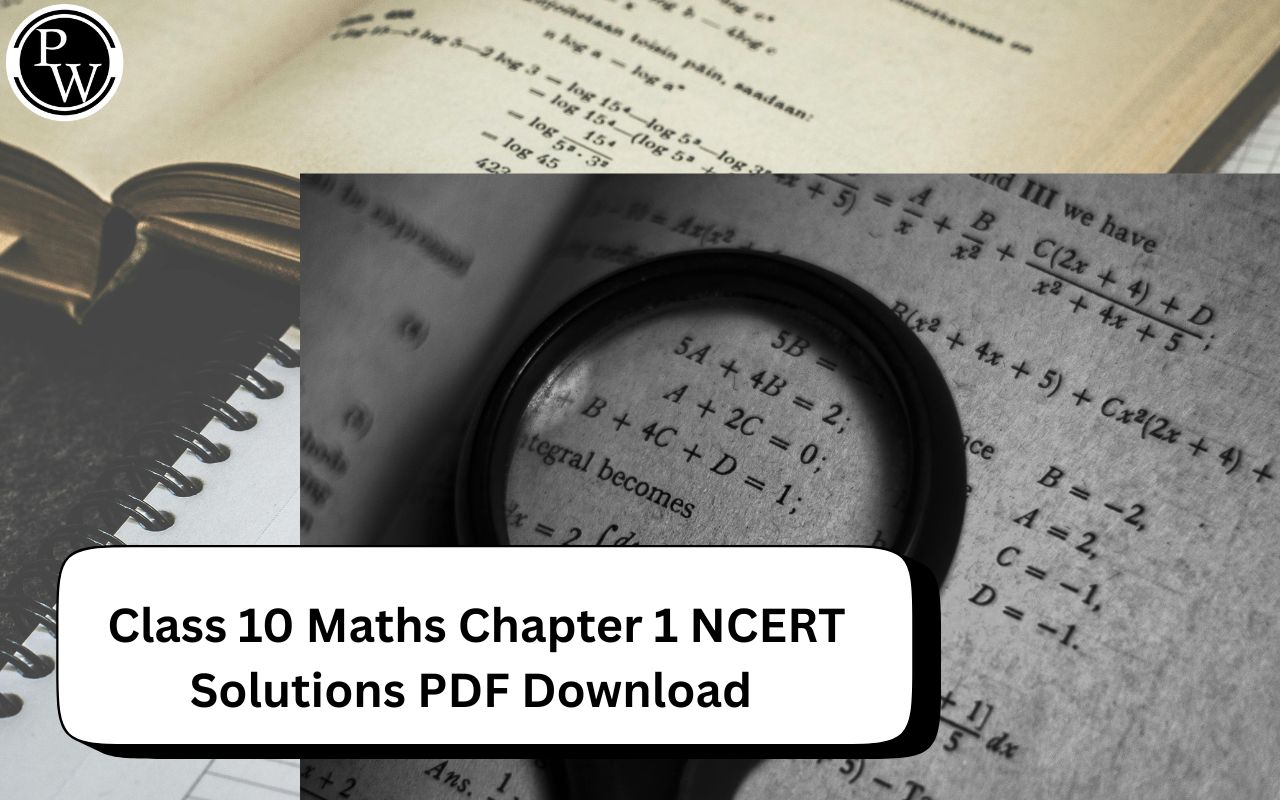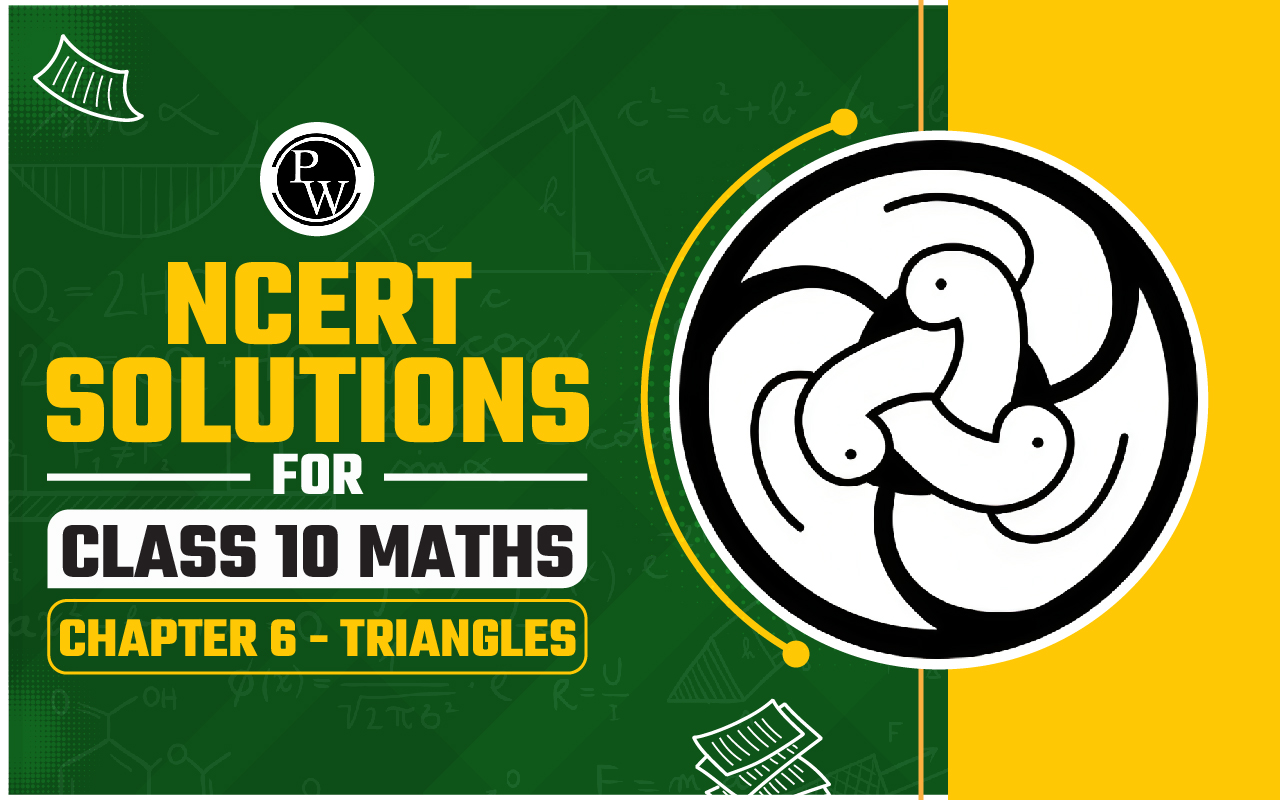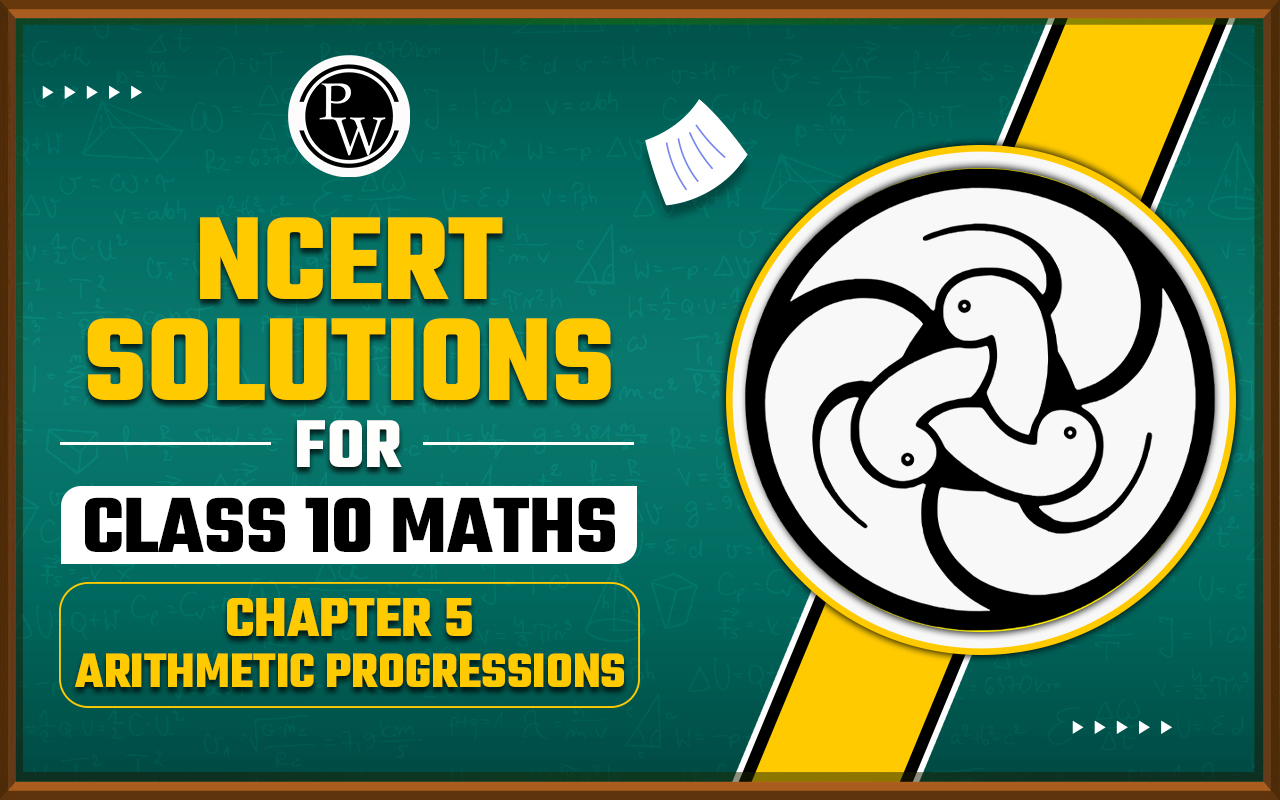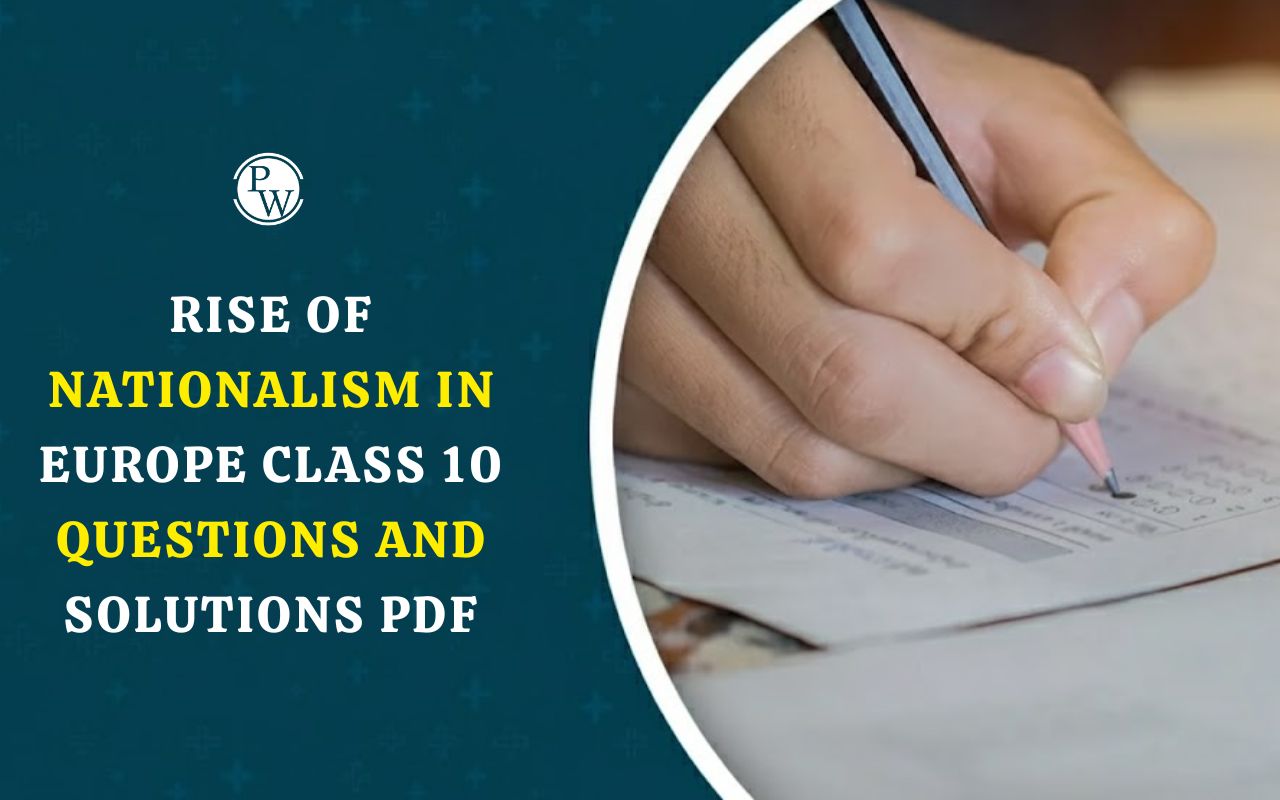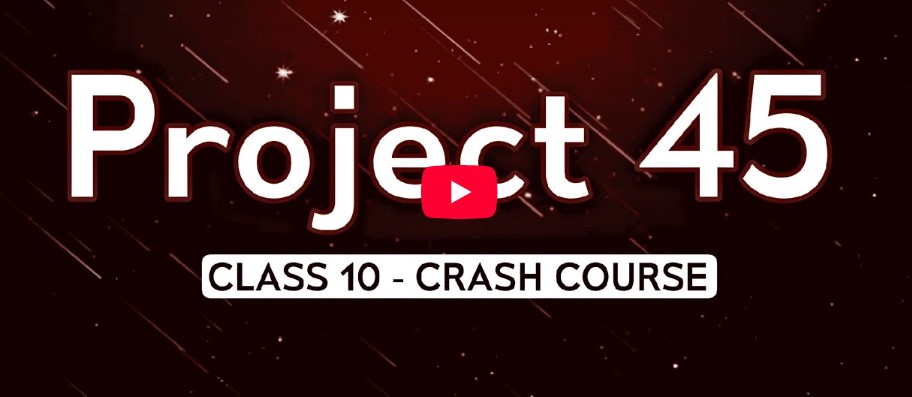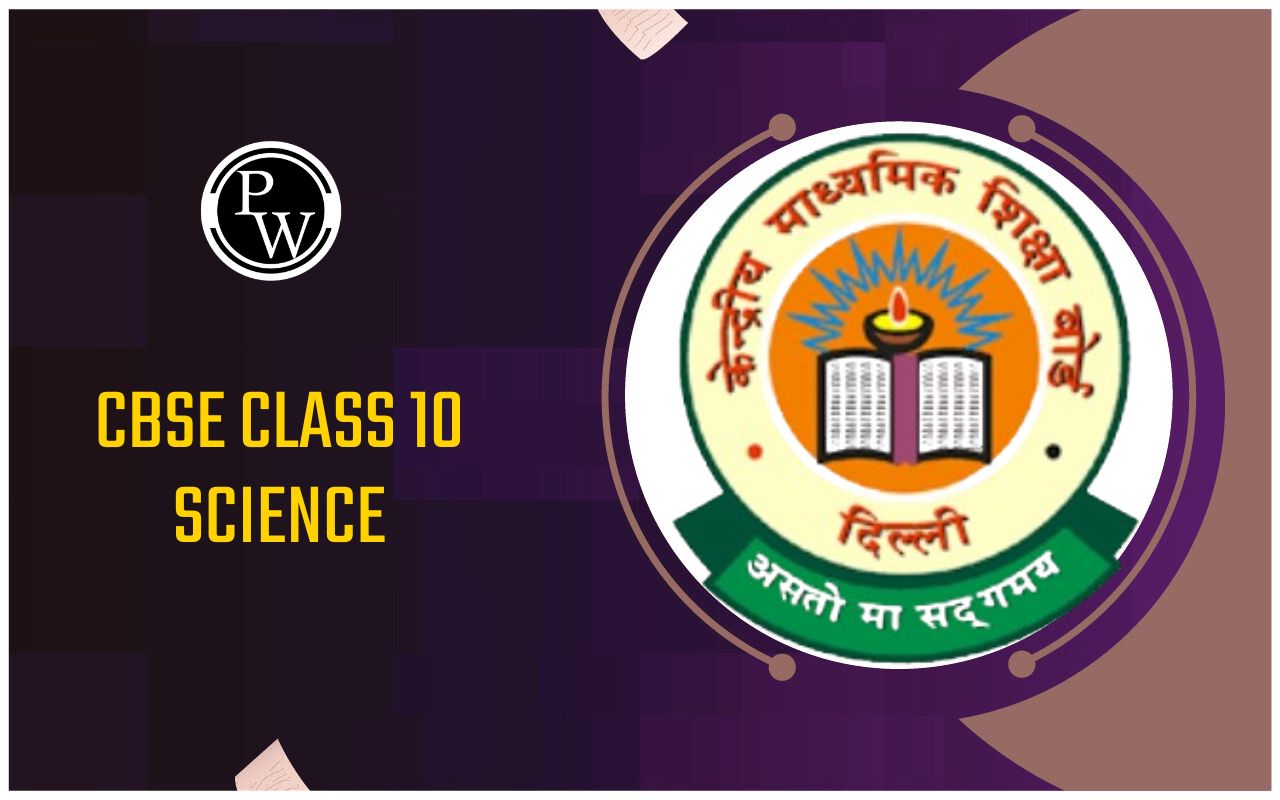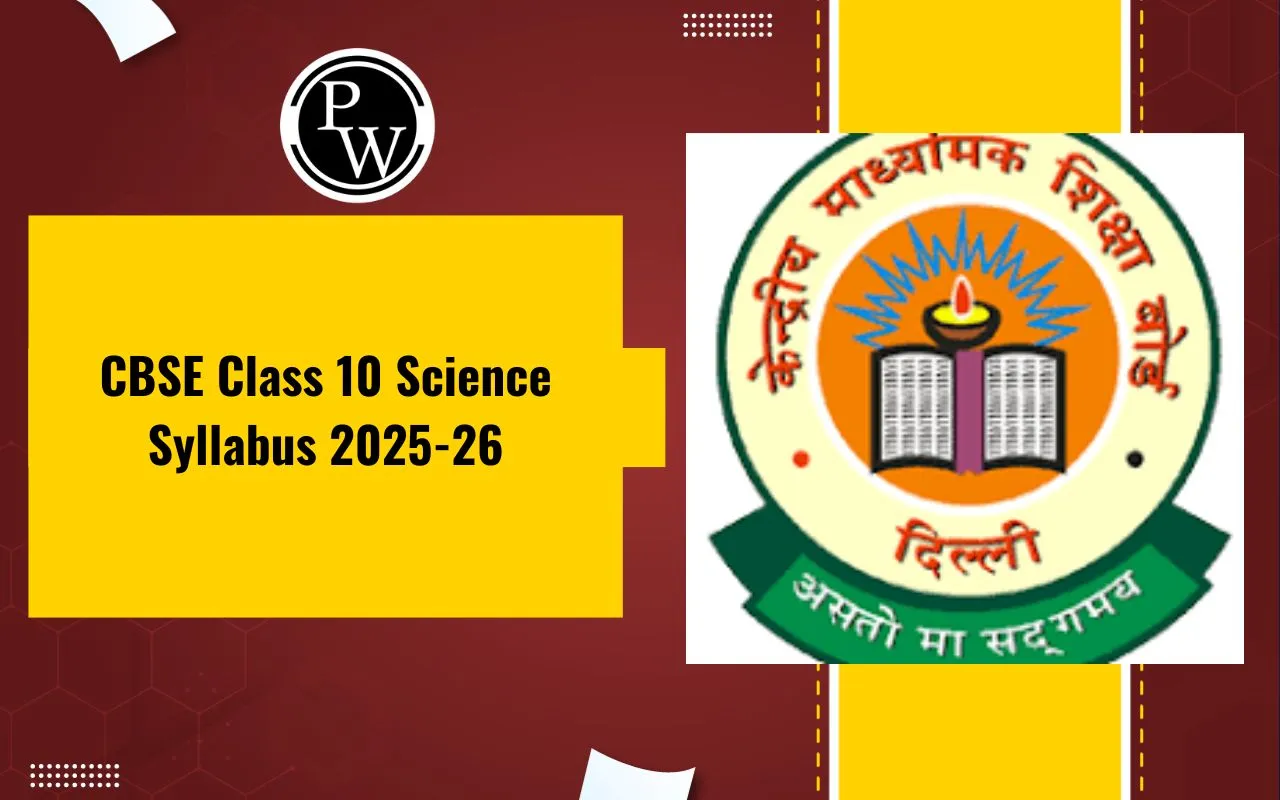
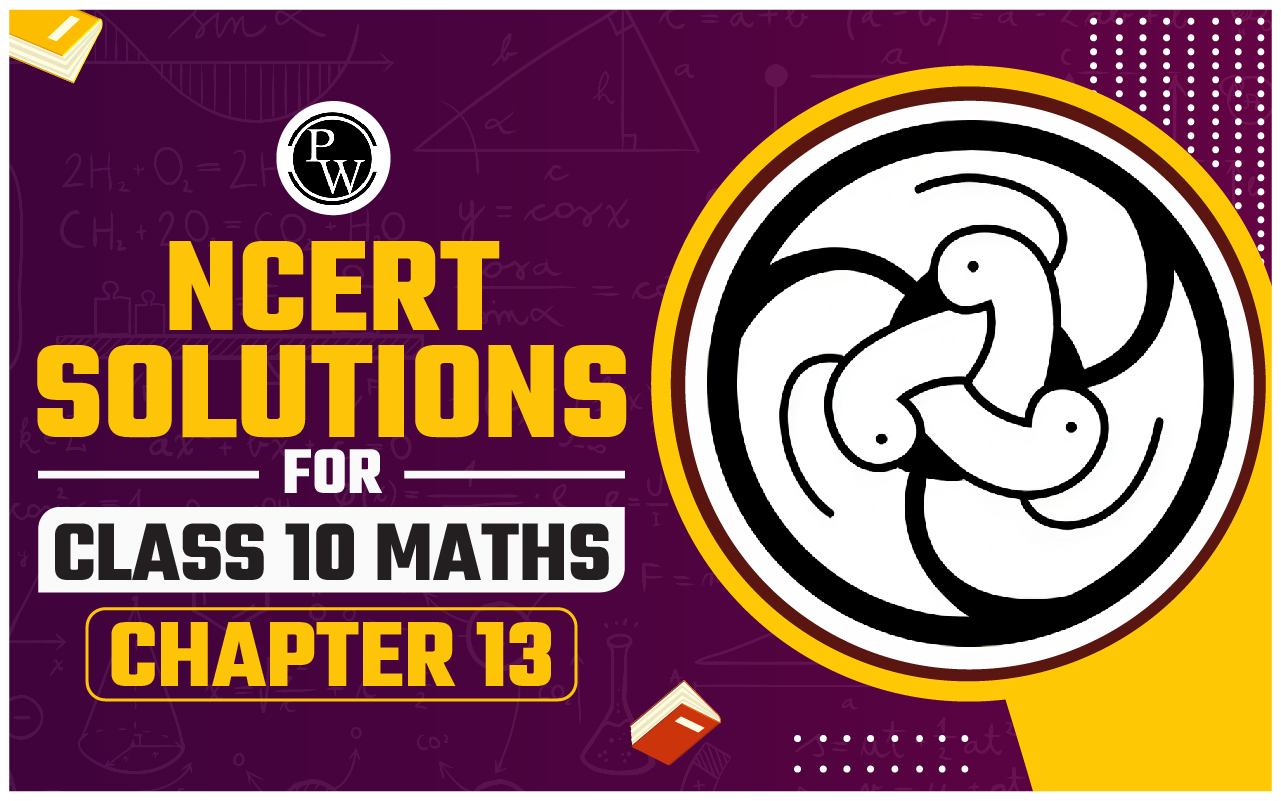
NCERT Solutions for Class 10 Maths Chapter 13
NCERT Solutions for Class 10 Maths Chapter 13: This is the NCERT Solutions for Class 10 Maths Chapter 13 Surface Areas and Volumes. You will learn how to answer problems based on surface areas and volumes of various shapes, including spheres, cylinders, cones, and more, in this chapter.
Additionally, you will discover how to change a solid's form and then calculate the volume and surface area of the newly formed form. Our math specialists have created the solutions to aid students in comprehending the ideas behind various forms. The NCERT Solutions for Class 10 Maths Chapter 13, Surface Areas and Volumes, provides a thorough explanation and solution for the various measures of area and volume found in 3D models.NCERT Solutions for Class 10 Maths Chapter 13 PDF
Since the Surface Area and Volume Class 10 Solution is based on the most recent CBSE curriculum, students may be confident that using our solutions will result in high maths test scores. You may also go over and work through our updated NCERT Book solutions. From here students can download the NCERT Solutions for Class 10 Maths Chapter 13 PDF -NCERT Solutions for Class 10 Maths Chapter 13 PDF
NCERT Solutions for Class 10 Maths Chapter 13 Surface Areas and Volumes
1. 2 cubes each of volume 64 cm 3 are joined end to end. Find the surface area of the resulting cuboid.
Answer :
The diagram is given as: Given,
The Volume (V) of each cube is = 64 cm
3
This implies that a
3
= 64 cm
3
∴ a = 4 cm
Now, the side of the cube = a = 4 cm
Also, the length and breadth of the resulting cuboid will be 4 cm each, while its height will be 8 cm.
So, the surface area of the cuboid = 2(lb+bh+lh)
= 2(8×4+4×4+4×8) cm
2
= 2(32+16+32) cm
2
= (2×80) cm
2
= 160 cm
2
Given,
The Volume (V) of each cube is = 64 cm
3
This implies that a
3
= 64 cm
3
∴ a = 4 cm
Now, the side of the cube = a = 4 cm
Also, the length and breadth of the resulting cuboid will be 4 cm each, while its height will be 8 cm.
So, the surface area of the cuboid = 2(lb+bh+lh)
= 2(8×4+4×4+4×8) cm
2
= 2(32+16+32) cm
2
= (2×80) cm
2
= 160 cm
2
2. A vessel is in the form of a hollow hemisphere mounted by a hollow cylinder. The diameter of the hemisphere is 14 cm, and the total height of the vessel is 13 cm. Find the inner surface area of the vessel.
Answer:
The diagram is as follows: Now, the given parameters are:
The diameter of the hemisphere = D = 14 cm
The radius of the hemisphere = r = 7 cm
Also, the height of the cylinder = h = (13-7) = 6 cm
And the radius of the hollow hemisphere = 7 cm
Now, the inner surface area of the vessel = CSA of the cylindrical part + CSA of the hemispherical part
(2πrh+2πr
2
) cm
2
= 2πr(h+r) cm
2
2×(22/7)×7(6+7) cm
2
= 572 cm
2
Now, the given parameters are:
The diameter of the hemisphere = D = 14 cm
The radius of the hemisphere = r = 7 cm
Also, the height of the cylinder = h = (13-7) = 6 cm
And the radius of the hollow hemisphere = 7 cm
Now, the inner surface area of the vessel = CSA of the cylindrical part + CSA of the hemispherical part
(2πrh+2πr
2
) cm
2
= 2πr(h+r) cm
2
2×(22/7)×7(6+7) cm
2
= 572 cm
2
3. A toy is in the form of a cone of radius 3.5 cm mounted on a hemisphere of the same radius. The total height of the toy is 15.5 cm. Find the total surface area of the toy.
Answer:
The diagram is as follows: Given that the radius of the cone and the hemisphere (r) = 3.5 cm or 7/2 cm
The total height of the toy is given as 15.5 cm.
So, the height of the cone (h) = 15.5-3.5 = 12 cm
Given that the radius of the cone and the hemisphere (r) = 3.5 cm or 7/2 cm
The total height of the toy is given as 15.5 cm.
So, the height of the cone (h) = 15.5-3.5 = 12 cm
 ∴ The curved surface area of the cone = πrl
(22/7)×(7/2)×(25/2) = 275/2 cm
2
Also, the curved surface area of the hemisphere = 2πr
2
2×(22/7)×(7/2)
2
= 77 cm
2
Now, the Total surface area of the toy = CSA of the cone + CSA of the hemisphere
= (275/2)+77 cm
2
= (275+154)/2 cm
2
= 429/2 cm
2
= 214.5cm
2
So, the total surface area (TSA) of the toy is 214.5cm
2
∴ The curved surface area of the cone = πrl
(22/7)×(7/2)×(25/2) = 275/2 cm
2
Also, the curved surface area of the hemisphere = 2πr
2
2×(22/7)×(7/2)
2
= 77 cm
2
Now, the Total surface area of the toy = CSA of the cone + CSA of the hemisphere
= (275/2)+77 cm
2
= (275+154)/2 cm
2
= 429/2 cm
2
= 214.5cm
2
So, the total surface area (TSA) of the toy is 214.5cm
2
4. A cubical block of side 7 cm is surmounted by a hemisphere. What is the greatest diameter the hemisphere can have? Find the surface area of the solid.
Answer:
It is given that each side of the cube is 7 cm. So, the radius will be 7/2 cm.

5. A hemispherical depression is cut out from one face of a cubical wooden block such that the diameter l of the hemisphere is equal to the edge of the cube. Determine the surface area of the remaining solid.
Answer:
The diagram is as follows:

6. A medicine capsule is in the shape of a cylinder with two hemispheres stuck to each of its ends. The length of the entire capsule is 14 mm, and the diameter of the capsule is 5 mm. Find its surface area.

Answer:
Two hemispheres and one cylinder are shown in the figure given below. Here, the diameter of the capsule = 5 mm
∴ Radius = 5/2 = 2.5 mm
Now, the length of the capsule = 14 mm
So, the length of the cylinder = 14-(2.5+2.5) = 9 mm
∴ The surface area of a hemisphere = 2πr
2
= 2×(22/7)×2.5×2.5
= 275/7 mm
2
Now, the surface area of the cylinder = 2πrh
= 2×(22/7)×2.5×9
(22/7)×45 = 990/7 mm
2
Thus, the required surface area of the medicine capsule will be
= 2×surface area of hemisphere + surface area of the cylinder
= (2×275/7) × 990/7
= (550/7) + (990/7) = 1540/7 = 220 mm
2
Here, the diameter of the capsule = 5 mm
∴ Radius = 5/2 = 2.5 mm
Now, the length of the capsule = 14 mm
So, the length of the cylinder = 14-(2.5+2.5) = 9 mm
∴ The surface area of a hemisphere = 2πr
2
= 2×(22/7)×2.5×2.5
= 275/7 mm
2
Now, the surface area of the cylinder = 2πrh
= 2×(22/7)×2.5×9
(22/7)×45 = 990/7 mm
2
Thus, the required surface area of the medicine capsule will be
= 2×surface area of hemisphere + surface area of the cylinder
= (2×275/7) × 990/7
= (550/7) + (990/7) = 1540/7 = 220 mm
2
Related Links -
7. A tent is in the shape of a cylinder surmounted by a conical top. If the height and diameter of the cylindrical part are 2.1 m and 4 m, respectively, and the slant height of the top is 2.8 m, find the area of the canvas used for making the tent. Also, find the cost of the canvas of the tent at the rate of Rs 500 per m 2 . (Note that the base of the tent will not be covered with canvas.)
Answer:
It is known that a tent is a combination of a cylinder and a cone. From the question, we know that
Diameter = 4 m
The slant height of the cone (l) = 2.8 m
Radius of the cone (r) = Radius of cylinder = 4/2 = 2 m
Height of the cylinder (h) = 2.1 m
So, the required surface area of the tent = surface area of the cone + surface area of the cylinder
= πrl+2πrh
= πr(l+2h)
= (22/7)×2(2.8+2×2.1)
= (44/7)(2.8+4.2)
= (44/7)×7 = 44 m
2
∴ The cost of the canvas of the tent at the rate of ₹500 per m
2
will be
= Surface area × cost per m
2
44×500 = ₹22000
So, Rs. 22000 will be the total cost of the canvas.
From the question, we know that
Diameter = 4 m
The slant height of the cone (l) = 2.8 m
Radius of the cone (r) = Radius of cylinder = 4/2 = 2 m
Height of the cylinder (h) = 2.1 m
So, the required surface area of the tent = surface area of the cone + surface area of the cylinder
= πrl+2πrh
= πr(l+2h)
= (22/7)×2(2.8+2×2.1)
= (44/7)(2.8+4.2)
= (44/7)×7 = 44 m
2
∴ The cost of the canvas of the tent at the rate of ₹500 per m
2
will be
= Surface area × cost per m
2
44×500 = ₹22000
So, Rs. 22000 will be the total cost of the canvas.
8. From a solid cylinder whose height is 2.4 cm and diameter is 1.4 cm, a conical cavity of the
same height and same diameter is hollowed out. Find the total surface area of the
remaining solid to the nearest cm 2 .
Answer:
The diagram for the question is as follows: From the question, we know the following:
The diameter of the cylinder = diameter of conical cavity = 1.4 cm
So, the radius of the cylinder = radius of the conical cavity = 1.4/2 = 0.7
Also, the height of the cylinder = height of the conical cavity = 2.4 cm
From the question, we know the following:
The diameter of the cylinder = diameter of conical cavity = 1.4 cm
So, the radius of the cylinder = radius of the conical cavity = 1.4/2 = 0.7
Also, the height of the cylinder = height of the conical cavity = 2.4 cm
 Now, the TSA of the remaining solid = surface area of conical cavity + TSA of the cylinder
= πrl+(2πrh+πr
2
)
= πr(l+2h+r)
= (22/7)× 0.7(2.5+4.8+0.7)
= 2.2×8 = 17.6 cm
2
So, the total surface area of the remaining solid is 17.6 cm
2
Now, the TSA of the remaining solid = surface area of conical cavity + TSA of the cylinder
= πrl+(2πrh+πr
2
)
= πr(l+2h+r)
= (22/7)× 0.7(2.5+4.8+0.7)
= 2.2×8 = 17.6 cm
2
So, the total surface area of the remaining solid is 17.6 cm
2
Exercise: 13.2
1. A solid is in the shape of a cone standing on a hemisphere, with both their radii being equal to 1 cm and the height of the cone being equal to its radius. Find the volume of the solid in terms of π.
Solution:
Here r = 1 cm and h = 1 cm. The diagram is as follows. Now, Volume of solid = Volume of conical part + Volume of hemispherical part
We know the volume of cone = ⅓ πr
2
h
And,
The volume of the hemisphere = ⅔πr
3
So, the volume of the solid will be
Now, Volume of solid = Volume of conical part + Volume of hemispherical part
We know the volume of cone = ⅓ πr
2
h
And,
The volume of the hemisphere = ⅔πr
3
So, the volume of the solid will be
 = π cm
3
= π cm
3
2. Rachel, an engineering student, was asked to make a model shaped like a cylinder with two cones attached at its two ends by using a thin aluminium sheet. The diameter of the model is 3 cm, and its length is 12 cm.
If each cone has a height of 2 cm, find the volume of air contained in the model that Rachel made. (Assume the outer and inner dimensions of the model are nearly the same.)
Solution:
Given, Height of cylinder = 12–4 = 8 cm Radius = 1.5 cm Height of cone = 2 cm Now, the total volume of the air contained will be = Volume of cylinder+2×(Volume of the cone) ∴ Total volume = πr 2 h+[2×(⅓ πr 2 h )] = 18 π+2(1.5 π) = 66 cm 3 .3. A gulab jamun contains sugar syrup up to about 30% of its volume. Find approximately how much syrup would be found in 45 gulab jamuns, each shaped like a cylinder with two hemispherical ends with a length of 5 cm and a diameter of 2.8 cm (see figure).

Solution:
It is known that the gulab jamuns are similar to a cylinder with two hemispherical ends. So, the total height of a gulab jamun = 5 cm. Diameter = 2.8 cm So, radius = 1.4 cm ∴ The height of the cylindrical part = 5 cm–(1.4+1.4) cm =2.2 cm Now, the total volume of one gulab jamun = Volume of cylinder + Volume of two hemispheres = πr 2 h+(4/3)πr 3 = 4.312π+(10.976/3) π = 25.05 cm 3 We know that the volume of sugar syrup = 30% of the total volume So, the volume of sugar syrup in 45 gulab jamuns = 45×30%(25.05 cm 3 ) = 45×7.515 = 338.184 cm 34. A pen stand made of wood is in the shape of a cuboid with four conical depressions to hold pens. The dimensions of the cuboid are 15 cm by 10 cm by 3.5 cm.
The radius of each of the depressions is 0.5 cm, and the depth is 1.4 cm. Find the volume of wood in the entire stand (see Fig.).

Solution:
The volume of the cuboid = length x width x height We know the cuboid’s dimensions as 15 cmx10 cmx3.5 cm So, the volume of the cuboid = 15x10x3.5 = 525 cm 3 Here, depressions are like cones, and we know, Volume of cone = (⅓)πr 2 h Given, radius (r) = 0.5 cm and depth (h) = 1.4 cm ∴ Volume of 4 cones = 4x(⅓)πr 2 h = 1.46 cm 2 Now, the volume of wood = Volume of the cuboid – 4 x volume of the cone = 525-1.46 = 523.54 cm 2Related Links -
5. A vessel is in the form of an inverted cone. Its height is 8 cm and the radius of its top, which is open, is 5 cm. It is filled with water up to the brim.
When lead shots, each of which is a sphere of radius 0.5 cm, are dropped into the vessel, one-fourth of the water flows out. Find the number of lead shots dropped in the vessel.
Solution:
For the cone, Radius = 5 cm, Height = 8 cm Also, Radius of sphere = 0.5 cm The diagram will be like It is known that,
The volume of cone = volume of water in the cone
= ⅓πr
2
h = (200/3)π cm
3
Now,
Total volume of water overflown= (¼)×(200/3) π =(50/3)π
The volume of lead shot
= (4/3)πr
3
= (1/6) π
Now,
The number of lead shots = Total volume of water overflown/Volume of lead shot
= (50/3)π/(⅙)π
= (50/3)×6 = 100
It is known that,
The volume of cone = volume of water in the cone
= ⅓πr
2
h = (200/3)π cm
3
Now,
Total volume of water overflown= (¼)×(200/3) π =(50/3)π
The volume of lead shot
= (4/3)πr
3
= (1/6) π
Now,
The number of lead shots = Total volume of water overflown/Volume of lead shot
= (50/3)π/(⅙)π
= (50/3)×6 = 100
6. A solid iron pole consists of a cylinder of height 220 cm and base diameter 24 cm, which is surmounted by another cylinder of height 60 cm and radius 8 cm. Find the mass of the pole, given that 1 cm 3 of iron has approximately 8 g mass.
Solution:
Given the height of the big cylinder (H) = 220 cm The radius of the base (R) = 24/2 = 12 cm So, the volume of the big cylinder = πR 2 H = π(12) 2 × 220 cm 3 = 99565.8 cm 3 Now, the height of the smaller cylinder (h) = 60 cm The radius of the base (r) = 8 cm So, the volume of the smaller cylinder = πr 2 h = π(8) 2 ×60 cm 3 = 12068.5 cm 3 ∴ The volume of iron = Volume of the big cylinder+ Volume of the small cylinder = 99565.8 + 12068.5 =111634.5 cm 3 We know, Mass = Density x volume So, the mass of the pole = 8×111634.5 = 893 Kg (approx.)7. A solid consisting of a right circular cone of height 120 cm and radius 60 cm standing on a hemisphere of radius 60 cm is placed upright in a right circular cylinder full of water such that it touches the bottom.
Find the volume of water left in the cylinder if the radius of the cylinder is 60 cm and its height is 180 cm.
Solution:

NCERT Solutions for Class 10 Maths Chapter 13 FAQs
What is in chapter 13 of class 10 maths?
What is the most important chapter in class 10th maths?
How to avoid mistakes in surface area and volume class 10?

